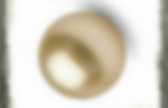

Sylvie coellier - Google Search. Maurizio Cattelan | Art | Phaidon Store. About the book Maurizio Cattelan (b.1960) is today's best-known Italian artist. In some ways an heir to the legendary Italian 'anti-artist' Piero Manzoni, Cattelan produces witty, unorthodox performances, sculptures and photoworks that are as varied as they are unsettling. This humorous, untraditional art often takes an off-centre standpoint at the margins of mainstream society to poke fun at art history, monumentality and nationalism. Cattelan was once a furniture designer, which infuses all his unconventional work with a surprising elegance that is especially striking. He works in a great variety of media. References to Arte Povera, classic Italian figurative sculpture and much post-war art and culture are blended in Cattelan's work with the artist's own idiosyncracies. Italian curator and critic Francesco Bonami describes in his Survey the artist's development in his local political and socio-historical context.
Christian Marclay | Art | Phaidon Store. Maurizio Cattelan covers windows in Toilet Paper. A casual passer-by on Avenue du President Wilson in Paris's 16th arrondissement might think the windows of contemporary art institution Palais de Tokyo had been given over to a particularly provocative advertising campaign. However, after taking in all seven of the glossy sets of images - including shots of five disembodied male hands holding red lipsticks and a playing card wedged between a naked woman's buttocks - the viewer is none the wiser as to what he or she should buy.
Maurizio Cattelan's Toilet Paper images on the windows of Paris' Palais de Tokyo These photographs, while possessing all the trappings of commercial photography, actually come from Italian artist Maurizio Cattelan's Toilet Paper magazine, a twice-yearly publication of slickly surrealist images, which he has been putting together with the fashion photographer Pierpaolo Ferrari since 2010.
It's hard to define what sets Toilet Paper's pictures apart from other acerbic examples of contemporary image making. Performance, art et anthropolo... - Fermer les « Campi Nomadi » d’... - Francesco Careri et Lorenzo Romito. 1Lorenzo Romito :Francesco Careri and I will try to contribute to this colloquium by trying to make some notes aside of our work in the last two years with the Roma community in the city of Rome, commonly named as gipsy. To do this, trying to respond to the frame we are called in, which is called “observation and context” we would like to have with us our usual participants-observers.
We have three of them here : Celesti Nicoletti, Biancha Iaccherino, and Francesco’s brother Giovanni Careri. This will help us. We are very much concerned on how we deal, and how we get observed while we do. 2We picked 13 minutes of images from the movies of two anthropologists and video-makers that have actually been producing some of the work we have been trying to instigate this time. 3Francesco Careri : Qu’est ce qu’on sait faire, nous ? 4Là on est au Caselino Novecento, c’est l’un des plus anciens camps de Rome. 6Lorenzo Romito: This is an attitude. New Topographics. Un article de Wikipédia, l'encyclopédie libre. L'influence de cette exposition sera sensible jusqu'en Europe, où dix ans plus tard deux des photographes exposés (Lewis Baltz et Frank Gohlke) participent à la Mission photographique de la DATAR.
Tous les membres des New Topographics seront par ailleurs impliqués dans l’enseignement supérieur de la photographie, à l'instar des Becher. Cette évolution professionnelle tendra à assurer une suprématie américaine sur le marché de l’art photographique jusqu’à la fin des années 1990. Participants à l'exposition et approche critique[modifier | modifier le code] Éléments techniques[modifier | modifier le code] La rupture n'est cependant pas sensible en ce qui concerne la technique. Les autres photographes des New topographics obtenaient des tirages de qualité comparable tout en ayant recours à l'agrandisseur. Trente-quatre ans après[modifier | modifier le code] Notes et références[modifier | modifier le code] Portail de la photographie. Art contemporain: l'art et le monde de l'enfance? | Suite 101. " Voici des autels sacrés pour ceux d'entre nous, forcés par leur culture, à suivre des routes plus sérieuses...honorer et conserver ces compagnons perdus ".
Ainsi s’exprime Charlemagne Palestine en présentant lui-même son Bordel sacré qui est une installation présentée dans un espace variable de 40 à 80m² Des peluches, des jouets, des casquettes, des tissus de culte d'ethnies différentes, des coussins, des spots, des photographies, un harmonium d’Inde, un miroir, des bougies, des pistolets en plastique, deux valises, du papier d’aluminium, un ventilateur, deux lecteurs CD où sont enregistrés, spécifiquement pour l'installation, des cris d’animaux sauvages et les Voix du monde, une anthologie des expressions vocales appartenant à la collection CNRS du Musée de l’homme.
Un téléviseur diffuse en boucle le film animé de Disney le Livre de la jungle. Le monde de l’enfance Chargées d’émotion et de plaisir, peluches et vidéo appartiennent au domaine et aux cultures de l'enfance. Qui adore qui ? Parler sexes. Parade - revue d'art et de littérature.